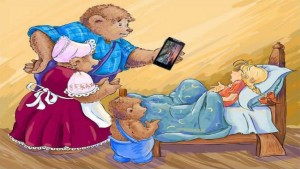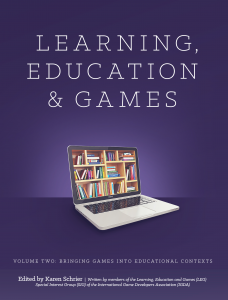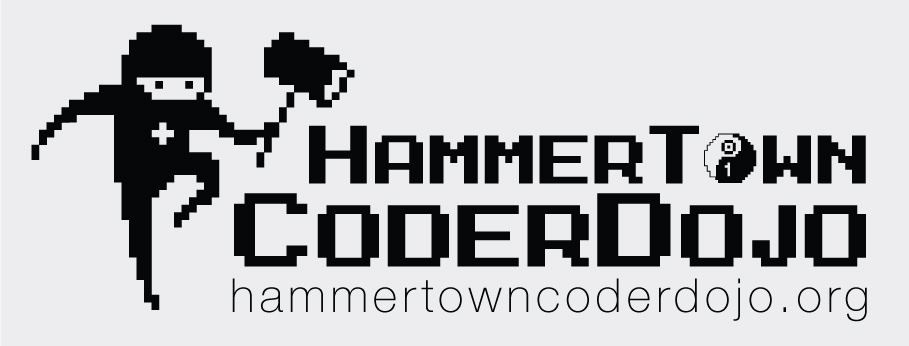Play has been removed from schools by non-educators
Brock Dubbels, Ph.D.
Dept. Psychology, Neuroscience, & Behaviour
McMaster University
It was not psychologists, educators, or child development researchers that removed play from schools. According to McCombs & Miller (2007), the emphasis on performance testing and standardization was led by a campaign of politicians and corporate interests to influence what happened in the classroom. With government reports such as Nation At Risk (1983), the National Governors Association (1989) worked to create Goals 2000 (1994) and called for greater levels of accountability for student achievement and rigorous academic standards. They called for more focus on standardized content, standardized content delivery, and standardized tests. This campaign to standardize schools worked to change classroom curriculum, but it contradicted and ignored 100 years of psychological research about human learning (McCombs & Miller, 2007).
The new standards and assessments became mandated performance indicators on how schools were evaluated. For a school to be rated as competent, their students had to meet federal and state performance guidelines, and school funding was tied to student performance on standardized assessments. This situation became so desperate for some schools, that entire school districts (superintendents, principals, and teachers) committed fraud by falsifying assessment data (Dayen, 2015).
Political reasons for standardization over play
Elected officials and journalists reported that American students had fallen behind other industrialized nations in math and science, and the proof was in American student performance on international testing tests called PISA and TIMMS. They warned that without improvements in student performance in math and science, the USA would no longer be competitive on the world stage (US Committee on Prospering in the Global Economy of the 21st Century, Science, & (US), 2007).
Reports such as these were political in nature. When American student scores are compared to students of the same income level, students in the United States did significantly better than all other countries:
For every administration of PISA and TIMSS, when controlling for
poverty, U.S. public school students are not only competitive, they
downright lead the world. Even at home nationally, when controlling
for poverty, public school students compete with private school
students in Lutheran, Catholic, and Christian schools when analyzing
NAEP data (Ravitch, 2013).
Poverty plays a central role in student performance. Schools serving lower-income students tend to be organized and operated differently than those serving more affluent students. Poverty is the most significant impact on academic performance. It does not matter if these schools are big or small, private, or religious. Poverty is the most significant predictor of poor academic performance (McNeil & Valenzuela, 2000; Rumberger & Palardy, 2005). Students in poverty often come to school without the social and economic benefits held by many middle-to-high SES students, such as access to books, food, parental support with schoolwork, and financial stability (Sirin, 2005).
In wealthy schools, students are more likely experience playful activities and learner centered pedagogy (Anyon, 1980). Schools that serve children in poverty, not only struggle the most, but are also often the first to get the standardized education, reduction in play, and elimination of electives such as music, arts, and training. We may be compounding the problem, rather than offering a solution by removing these things from children in poverty.
Children in poverty also experience greater exposure to threat and violence, which contributes to play deprivation. Play deprivation has arisen as a medical diagnosis. It means that children do not experience the essential cognitive, social, and affective benefits of learning through play (Milteer, Ginsburg, Health, & Mulligan, 2012). Play is an essential element of learning and development. Removing play in favor of standardization is a mistake.
Standardization is profit-centered, not student-centered
If anything was learned from the standardization campaign, it was that the creation of standards and content has proven to be very financially lucrative to testing companies, and very destructive for school districts (Dayen, 2015). These policies have led to change of control, where classrooms are now legislated through national education standards, and this legislation is often influenced, if not written by, lobbyists that work for the companies that profit from selling tests and curriculum, rather than the people who have experience working with children and child development research (Leistyna, 2007).
The shift to standardized assessment and curriculum has also led to instability. It is very profitable to have standards change. When standards change, schools are required to meet those new standards, and this is often accomplished by paying for new tests and new curriculum. State-based initiatives on Common Core—the standards and assessments—change every 4 years (Porter, McMaken, Hwang, & Yang, 2011). Each shift in standards constitutes a form of educational whack-a-mole, where districts are forced to purchase new curriculum, and states must create new assessments. This is a lucrative market, over $2 billion annually (Strauss, 2015).
To cultivate financial opportunity, educational publishers have been very involved in this process; Pearson Education, ETS (Educational Testing Service), Houghton Mifflin Harcourt, and McGraw-Hill collectively spent more than $20 million lobbying in states and on Capitol Hill from 2009 to 2014 (ibid). In many ways, standardization and accountability initiatives have exacerbated the “problems” they set out to solve, and instead, created a lucrative market for pre-packaged curriculum and tests, the deprofessionalization of teachers, and significant cost to American taxpayers.
Standardized methods of assessment often lack the long view, and do not pass the tests of time, retention, and adaptation. According to Atkinson & Mayo, (2010) focus on subject matter and facts only serve to limit student motivation, learning and choice, and reduce the potential for innovation. Additionally, high stakes tests, and the practice of evaluation during instruction is an unreliable index of whether the long-term changes, which constitute learning, have actually taken place (for review, read Soderstrom & Bjork, 2015).
Parents opt-out of standardization
Interestingly, many parents and stakeholders have begun to embrace the long view, and begun to doubt the value of testing; they have begun to “opt-out”, which is now called the “opt-out parents movement” (Layton, 2013). The opt-out movement indicates a trend towards more play-based and learner-centered practices, advocated for by the American Psychological Association (APA) (Alexander & Murphy, 1998; Barbara, 2004; Cornelius-White, 2007; McCombs, 2001; McCombs & Miller, 2007; Weimer, 2013).
The benefits of play
 Play is not only an imaginative activity of amusement. Play and games serve important roles in cognitive, social, and affective development (Dubbels, 2014; Fisher, 1992; Frost, 1998; Garvey, 1990). In pre-industrial times, pastoral and foraging societies, children did not learn sequestered away from adult contexts (Thomas, 1964). Instead, children participated in playful variations of adult activities, where they could observe adults at work, and were able to imitate and emulate these activities through play without the danger of failure and consequence (Bock, 2005; Rogoff, 1994).
Play is not only an imaginative activity of amusement. Play and games serve important roles in cognitive, social, and affective development (Dubbels, 2014; Fisher, 1992; Frost, 1998; Garvey, 1990). In pre-industrial times, pastoral and foraging societies, children did not learn sequestered away from adult contexts (Thomas, 1964). Instead, children participated in playful variations of adult activities, where they could observe adults at work, and were able to imitate and emulate these activities through play without the danger of failure and consequence (Bock, 2005; Rogoff, 1994).
Rubin, Fein, and Vandenberg provided a thorough psychological overview of the early role of play in their chapter in volume four of the Manual of Child Psychology (1983). They observed that humans play longer relative to other mammals that play. Lancaster and Lancaster (1987) built upon this position and state that this extended period of play is essential for development. Bjorklund, (2006) expands upon this view, and states that humans play longer because they are adaptive organisms, and, that extended play is essential, allowing humans the skills and knowledge to become independent in complex environments.
When children engage in complex peer play, they exhibit greater gains in levels of symbolic functional and oral language production, as compared to if they are interacting with an adult (Pellegrini, 1983). Additionally, when a learner experiences learning through play, where they can experience and role-play adult work, they report the activities are more meaningful, and that the activity did not feel like learning (Dubbels, 2010). This aligns with Winkielman & Cacioppo, (2001), who found that when learning new information is experienced as easy, processing is experienced as pleasant and effective.
Learning generated in the context of play, especially social play, can lead to greater engagement, improved recall, comprehension, and be more innovative. Juveniles can observe behaviors and strategies performed by adults but then recombine elements of these behaviors in novel routines in play (Bateson, 2005; Bruner, 1972; Fagen, 1981; Sutton-Smith, 1966). For example, the levels of children’s symbolic functional and oral language production are more varied and complex in peer play, relative to when they are interacting with an adult (Pellegrini, 1983). More importantly, play is a low-cost and low-risk way to learn new behaviors and acquire new skills and knowledge (ibid). Conversely, one could suggest that a limitation of direction instruction, observation, and imitating adults is that this kind of instruction will only transmit existing practices.
Offering activities to children in a playful mood can increase a willingness to take direction, and on-task behavior (Moore, Underwood, & Rosenhan, 1973; Rosenhan, Underwood, & Moore, 1974; Underwood, Froming, & Moore, 1977). To create a more playful mood, participants engage in playful communication, with emphasis on reducing or eliminating all commands, questions, and criticisms.
Play acts as an important organizing principle during developmental growth (Brown, 1998). Play is not only an imaginative activity; play also allows children to imitate and emulate adult work activities without the danger of failure. Children role-play activities from the adult world, and learn to use the tools, rules, and language of adult work. Play is an important part of academic learning. When children play, they develop new strategies and behaviors with minimal costs (Bateson, 2005; Burghardt, 2005; Spinka, Newbury, and Bekoff, 2001).
 Using a playful approach in the classroom represents a fundamental change in assessment, offering a philosophy of playful and data-informed assessment, as compared to standardized, data-driven assessment. To be data-informed, assessments are used to guide the way, not to indicate that learning is accomplished. In play-based assessment, one can inform and improve student learning, increase motivation and engagement, and improve our school’s programs by learning from our challenges, progress, and performance.
Using a playful approach in the classroom represents a fundamental change in assessment, offering a philosophy of playful and data-informed assessment, as compared to standardized, data-driven assessment. To be data-informed, assessments are used to guide the way, not to indicate that learning is accomplished. In play-based assessment, one can inform and improve student learning, increase motivation and engagement, and improve our school’s programs by learning from our challenges, progress, and performance.
A playful structuring of assessment allows one to integrate play, and utilize assessment as a form of instructional communication, reducing threat, and emphasizing play. The value of such an approach is that it provides support for a range of students, including specialized support to educationally disadvantaged populations, including economically disadvantaged students, English Language Learners, students with disabilities, and students who are at risk of not meeting state academic standards.
References
Alexander, P. A., & Murphy, P. K. (1998). The research base for APA’s learner-centered psychological principles. Retrieved from http://psycnet.apa.org/books/10258/001
Anyon, J. (1980). Social class and the hidden curriculum of work. Sociology of Education: Major Themes, 162, 1250.
Atkinson, R. D., & Mayo, M. J. (2010). Refueling the US innovation economy: Fresh approaches to science, technology, engineering and mathematics (STEM) education. The Information Technology & Innovation Foundation, Forthcoming. Retrieved from http://papers.ssrn.com/sol3/papers.cfm?abstract_id=1722822
Banks, J., Carson, J. S., Nelson, B. L., & Nicol, D. M. (2001). Verification and validation of simulation models. Discrete-Event System Simulation, 3rd Edition, Prentice-Hall, Upper Saddle River (NJ), 367–397.
Barbara, L. (2004). The learner-centered psychological principles: A framework for balancing academic achievement and social-emotional learning outcomes. Building Academic Success on Social and Emotional Learning: What Does the Research Say?, 23.
Black, P., & Wiliam, D. (2009). Developing the theory of formative assessment. Educational Assessment, Evaluation and Accountability, 21(1), 5–31.
Brown, S. (1998). Play as an organizing principle: clinical evidence and personal observations. Animal Play: Evolutionary, Comparative, and Ecological Perspectives, 242–251.
Committee, R. A. the G. S. (2010). Rising above the gathering storm, revisited: Rapidly approaching Category 5. National Academies Press, Washington DC.
Cornelius-White, J. (2007). Learner-centered teacher-student relationships are effective: A meta-analysis. Review of Educational Research, 77(1), 113–143.
Danielson, L. M. (2009). Fostering reflection. Educational Leadership, 66(5).
Dayen, D. (2015, April 3). The Biggest Outrage in Atlanta’s Crazy Teacher Cheating Case. Retrieved April 4, 2015, from http://finance.yahoo.com/news/biggest-outrage-atlanta-crazy-teacher-091500508.html
Deno, S. L., & Marston, D. (2006). Curriculum-based measurement of oral reading: An indicator of growth in fluency. What Research Has to Say about Fluency Instruction, 179–203.
Dubbels. (2014). Play: A Framework for Design, Development, & Gamification. Retrieved from http://www.yorku.ca/intent/issue7/articles/pdfs/brockrdubbelsarticle.pdf
Dubbels, B. (2008). Rhythm & Flow: Putting words to music as performance reading with garage band. In Professionalism in Practice (Vol. 1). The University of Minnesota: Minneapolis Public Schools.
Dubbels, B. (2010). Engineering curriculum and 21st century learning–improving academic performance with play and game design. In Games in Engineering & Computer Science GECS. National Science Foundation, Arlington, VA: NSF Course, Curriculum, and Laboratory Instruction program under Award No. 0938176. Retrieved from http://gecs.tamu.edu/index.php
Dubbels, B. (2013). Gamification, Serious Games, Ludic Simulation, and other Contentious Categories. International Journal of Gaming and Computer-Mediated Simulations (IJGCMS), 5(2).
Dweck, C. (2006). Mindset: The new psychology of success. Random House. Retrieved from http://books.google.ca/books?hl=en&lr=&id=fdjqz0TPL2wC&oi=fnd&pg=PA1&dq=Mindset:+The+New+Psychology+of+Success&ots=Bh76YKyGPD&sig=qkBjC2j6J9chNBClclBomJEANwI
Dweck, C. S. (2007). The perils and promises of praise. Retrieved from http://books.google.com/books?hl=en&lr=&id=QDwqACGdf0IC&oi=fnd&pg=PA57&dq=dweck+growth+mindset+academic+&ots=9rif4lroXa&sig=eOdyOEMPi3kt7oFFQh-ctyXZ2bA
Easterbrook, J. A. (1959). The effect of emotion on cue utilization and the organization of behavior. Psychological Review, 66(3), 183.
Elliot, A. J., & Covington, M. V. (2001). Approach and avoidance motivation. Educational Psychology Review, 13(2), 73–92.
Elliot, A. J., Gable, S. L., & Mapes, R. R. (2006). Approach and avoidance motivation in the social domain. Personality and Social Psychology Bulletin, 32(3), 378–391.
Fisher, D., & Frey, N. (2012). Close reading in elementary schools. The Reading Teacher, 66(3), 179–188.
Fisher, E. P. (1992). The impact of play on development: A meta-analysis. Play & Culture, 5(2), 159–181.
Fisher, M. (2013, April 15). Map: How 35 countries compare on child poverty (the U.S. is ranked 34th). The Washington Post. Retrieved from http://www.washingtonpost.com/blogs/worldviews/wp/2013/04/15/map-how-35-countries-compare-on-child-poverty-the-u-s-is-ranked-34th/
Forehand, R., & Scarboro, M. E. (1975). An analysis of children’s oppositional behavior. Journal of Abnormal Child Psychology, 3(1), 27–31.
Forgas, J. P., Burnham, D. K., & Trimboli, C. (1988). Mood, memory, and social judgments in children. Journal of Personality and Social Psychology, 54(4), 697–703. http://doi.org/10.1037/0022-3514.54.4.697
Forster, M. (2009). Informative Assessment—understanding and guiding learning. Retrieved from http://research.acer.edu.au/research_conference/RC2009/17august/11/
Fox, E. (2008). Emotion Science. Retrieved from http://www.palgrave.com%2Fpage%2Fdetail%2Femotion-science-elaine-fox%2F%3FK%3D9780230005174
Frost, J. L. (1998). Neuroscience, Play, and Child Development. Retrieved from http://files.eric.ed.gov/fulltext/ED427845.pdf
Gabe, T. (2015). Poverty in the United States: 2013 (Congressional Research Service No. RL33069). Retrieved from https://www.fas.org/sgp/crs/misc/RL33069.pdf
Gable, P. A., & Poole, B. D. (2012). Time Flies When You’re Having Approach-Motivated Fun Effects of Motivational Intensity on Time Perception. Psychological Science, 23(8), 879–886.
Garvey, C. (1990). Play. Harvard Univ Pr. Retrieved from http://books.google.com/books?hl=en&lr=&id=d711jR0AqvIC&oi=fnd&pg=PR9&dq=garvey+play+1990&ots=YxJSWlZ7_K&sig=xCIVNP5RLJvPG2eGD_hU4esXoaM
Gavenda, V. (2005). GarageBand 2 for Mac OS X (Visual QuickStart Guide). Peachpit Press. Retrieved from http://dl.acm.org/citation.cfm?id=1197774
Ginsburg, K. R. (2007). The importance of play in promoting healthy child development and maintaining strong parent-child bonds. Pediatrics, 119(1), 182–191.
Gunnar, M., & Quevedo, K. (2007). The neurobiology of stress and development. Annu. Rev. Psychol., 58, 145–173.
Johnson, S. M., & Lobitz, G. K. (1974). The personal and marital adjustment of parents as related to observed child deviance and parenting behaviors. Journal of Abnormal Child Psychology, 2(3), 193–207.
Kindergarten. (2015, December 10). In Wikipedia, the free encyclopedia. Retrieved from https://en.wikipedia.org/w/index.php?title=Kindergarten&oldid=694674848
Kohl, H. (1992). I won’t learn from you! Thoughts on the role of assent in learning. Rethinking Schools, 7(1), 16–17.
Kohl, H. (1994). I won’t learn from you. Confronting Student Resistance in Our Classrooms. Teaching for Equity and Social Justice, 134–135.
Lay, K.-L., Waters, E., & Park, K. A. (1989). Maternal Responsiveness and Child Compliance: The Role of Mood as a Mediator. Child Development, 60(6), 1405–1411. http://doi.org/10.2307/1130930
Layton, L. (2013). Bush, Obama focus on standardized testing leads to “opt-out” parents” movement. The Washington Post. Retrieved from http://216.78.200.159/RandD/Washington%20Post/Focus%20on%20Testing%20Leads%20to%20%E2%80%98Opt-Out%E2%80%99%20Movement%20-%20Post.pdf
Leistyna, P. (2007). Corporate testing: Standards, profits, and the demise of the public sphere. Teacher Education Quarterly, 59–84.
Lupien, S. J., McEwen, B. S., Gunnar, M. R., & Heim, C. (2009). Effects of stress throughout the lifespan on the brain, behaviour and cognition. Nature Reviews Neuroscience, 10(6), 434–445.
McCombs, B. L. (2001). What do we know about learners and learning? The learner-centered framework: Bringing the educational system into balance. Educational Horizons, 182–193.
McCombs, B. L., & Miller, L. (2007). Learner-Centered Classroom Practices and Assessments: Maximizing Student Motivation, Learning, and Achievement. Corwin Press.
McNeil, L., & Valenzuela, A. (2000). The harmful impact of the TAAS system of testing in Texas: Beneath the accountability rhetoric. Retrieved from http://eric.ed.gov/?id=ED443872
Milteer, R. M., Ginsburg, K. R., Health, C. on C. and M. C. on P. A. of C. and F., & Mulligan, D. A. (2012). The Importance of Play in Promoting Healthy Child Development and Maintaining Strong Parent-Child Bond: Focus on Children in Poverty. Pediatrics, 129(1), e204–e213. http://doi.org/10.1542/peds.2011-2953
Moore, B. S., Underwood, B., & Rosenhan, D. L. (1973). Affect and altruism. Developmental Psychology, 8(1), 99.
Papert, S. (1980). Mindstorms: Children, computers, and powerful ideas. Basic Books, Inc. Retrieved from http://dl.acm.org/citation.cfm?id=1095592
Parpal, M., & Maccoby, E. E. (1985). Maternal responsiveness and subsequent child compliance. Child Development, 1326–1334.
Peed, S., Roberts, M., & Forehand, R. (1977). Evaluation of the Effectiveness of a Standardized Parent Training Program in Altering the Interaction of Mothers and their Noncompliant Children. Behavior Modification, 1(3), 323–350. http://doi.org/10.1177/014544557713003
Porter, A., McMaken, J., Hwang, J., & Yang, R. (2011). Common core standards the new US intended curriculum. Educational Researcher, 40(3), 103–116.
Ravitch, D. (2013, December 5). Daniel Wydo Disaggregates PISA Scores by Income. Retrieved from http://dianeravitch.net/2013/12/05/daniel-wydo-disaggregates-pisa-scores-by-income/
Recess (break). (2015, December 7). In Wikipedia, the free encyclopedia. Retrieved from https://en.wikipedia.org/w/index.php?title=Recess_(break)&oldid=694207866
Reddy, L. A., Files-Hall, T. M., & Schaefer, C. E. (2005). Announcing empirically based play interventions for children. Empirically Based Play Interventions for Children, 3–10.
Resnick, M., & Silverman, B. (2005). Some reflections on designing construction kits for kids. In Proceedings of the 2005 conference on Interaction design and children (pp. 117–122). ACM. Retrieved from http://dl.acm.org/citation.cfm?id=1109556
Rosenhan, D. L., Underwood, B., & Moore, B. (1974). Affect moderates self-gratification and altruism. Journal of Personality and Social Psychology, 30(4), 546.
Rumberger, R., & Palardy, G. (2005). Does segregation still matter? The impact of student composition on academic achievement in high school. The Teachers College Record, 107(9), 1999–2045.
Sackett, A. M., Meyvis, T., Nelson, L. D., Converse, B. A., & Sackett, A. L. (2010). You’re having fun when time flies the hedonic consequences of subjective time progression. Psychological Science, 21(1), 111–117.
Sahlberg, P. (2007). Education policies for raising student learning: The Finnish approach. Journal of Education Policy, 22(2), 147–171.
Shaffer, D. W. (2006). Epistemic frames for epistemic games. Computers & Education, 46(3), 223–234.
Shaffer, D. W. (2006). How computer games help children learn. Macmillan.
Sirin, S. R. (2005). Socioeconomic status and academic achievement: A meta-analytic review of research. Review of Educational Research, 75(3), 417–453.
Soderstrom, N. C., & Bjork, R. A. (2015). Learning Versus Performance An Integrative Review. Perspectives on Psychological Science, 10(2), 176–199.
Strauss, V. (2015, March 30). Report: Big education firms spend millions lobbying for pro-testing policies. The Washington Post. Retrieved from http://www.washingtonpost.com/blogs/answer-sheet/wp/2015/03/30/report-big-education-firms-spend-millions-lobbying-for-pro-testing-policies/
Sutton-Smith, B. (2001). The ambiguity of play. Harvard Univ Pr. Retrieved from http://books.google.com/books?hl=en&lr=&id=AgA8q0TCKeIC&oi=fnd&pg=PR5&dq=sutton-smith&ots=Cna4A0r15X&sig=bjS1AtbvJP8cohAj52Oi2lZB1RE
Tennie, C., Call, J., & Tomasello, M. (2006). Push or pull: Imitation vs. emulation in great apes and human children. Ethology, 112(12), 1159–1169.
Underwood, B., Froming, W. J., & Moore, B. S. (1977). Mood, attention, and altruism: A search for mediating variables. Developmental Psychology, 13(5), 541.
(US Committee on Prospering in the Global Economy of the 21st Century, Science, & (US), P. P. (2007). Rising above the gathering storm: Energizing and employing America for a brighter economic future. National Academies Press. Retrieved from http://books.google.ca/books?hl=en&lr=&id=KoQf1m-s10UC&oi=fnd&pg=PR1&dq=Rising+Above+the+Gathering+Storm,+Energizing+and+Employing+America+for+a+Brighter+Economic+Future&ots=8otcXacPcm&sig=DepAfNSa-sXWLGNOD0F9nFlVZtQ
Weimer, M. (2013). Learner-Centered Teaching: Five Key Changes to Practice (2 edition). San Francisco: Jossey-Bass.
White, K. R. (1982). The relation between socioeconomic status and academic achievement. Psychological Bulletin, 91(3), 461.
Whiten, A., McGuigan, N., Marshall-Pescini, S., & Hopper, L. M. (2009). Emulation, imitation, over-imitation and the scope of culture for child and chimpanzee. Philosophical Transactions of the Royal Society B: Biological Sciences, 364(1528), 2417–2428.
Wiliam, D. (2007). Changing classroom practice. Educational Leadership, 65(4), 36.
Wiliam, D., & Thompson, M. (2007). Integrating assessment with learning: what will it take to make it work? Retrieved from http://eprints.ioe.ac.uk/1162/
Winkielman, P., & Cacioppo, J. T. (2001). Mind at ease puts a smile on the face: psychophysiological evidence that processing facilitation elicits positive affect. Journal of Personality and Social Psychology, 81(6), 989.
Yeager, D. S., & Dweck, C. S. (2012). Mindsets that promote resilience: When students believe that personal characteristics can be developed. Educational Psychologist, 47(4), 302–314.
 CHA P T E R 4
CHA P T E R 4
Pedagogy and Play: Creating a Playful Curriculum for
Academic Achievement and Engaged Learning
Brock R. Dubbels, PhD., Dept. Psychology, Neuroscience, & Behavior, McMaster University, Hamilton,
ON, Canada, Dubbels@McMaster.ca
Key Summary Points
Using instructional techniques based upon play can improve achievement. Standardization has created more problems than it solved. Three case studies are presented as demonstrations of the framework. When children engage in complex peer play, they exhibit greater gains in levels of symbolic functional and oral language production.
Key Terms
Play, Assessment, Learner Centered Practices, Instructional Communication, Curriculum, Cognitive, Affect, Classroom, Instructional Design, Learning
The Benefits of Play
Play is not only an imaginative activity of amusement. Play and games serve important roles in cognitive, social, and affective development (Dubbels, 2014; Fisher, 1992; Frost, 1998; Garvey, 1990). In pre-industrial times, pastoral and foraging societies, children did not learn sequestered away from adult contexts (Thomas, 1964). Instead, children participated in playful variations of adult activities, where they could observe adults at work, and were able to imitate and emulate these activities through play without the danger of failure and consequence (Bock, 2005; Rogoff, 1994). Rubin, Fein, and Vandenberg provided a thorough psychological overview of the early role of play in their chapter in volume four of the Manual of Child Psychology (1983). They observed that humans play longer relative to other mammals that play. Lancaster and Lancaster (1987) built upon this position and state that this extended period of play is essential for development. Bjorklund, (2006) expands upon this view, and states that humans play longer because they are adaptive organisms, and, that extended play is essential, allowing humans the skills and knowledge to become independent in complex environments. When children engage in complex peer play, they exhibit greater gains in levels of symbolic functional and oral language production, as compared to if they are interacting with an adult (Pellegrini, 1983). Additionally, when a learner experiences learning through play, where they can experience and roleplay adult work, they report the activities are more meaningful, and that the activity did not feel like learning (Dubbels, 2010). This aligns with Winkielman & Cacioppo, (2001), who found that when learning new information is experienced as easy, processing is experienced as pleasant and effective.
Read more of this article, download, feel good
This is the second book in the series, which was written, edited, and reviewed by members of the Learning, Education & Games Special Interest Group (LEG SIG), a subset of the International Game Developers Association (IGDA).
This volume explores issues designing and using games in formal learning environments, classrooms, and school-based programs. This includes chapters on (1) using games in the classroom, (2) how to choose appropriate games for the classroom, (3) using gamification (or game related techniques in non-game settings) in the classroom, (4) creating a playful curriculum, and (5) using games to support ADHD and autism spectrum students.
It delves into the needs of community constituents and informal learning spaces, such as libraries, homeschools, and parents and policy-makers, who are also intricately involved in guiding and implementing educational practices and initiatives.
Finally, we investigate the platform, technological, and other logistical considerations associated with designing and using games in educational settings. We discuss the merits and drawbacks of using LARPs (live action role-playing) as a tool for learning, and we also detail the latest software, engines, tools, platforms, and programs for making games. This is particularly useful for educators who are considering the pros and cons of various development tools to teach their students, or for educational game developers thinking about options for creating their next game.
I am pleased to provide you with the official announcement for the latest issue of the International Journal of Gaming and Computer-Mediated Simulations 8(2). Please post it to the appropriate listservs, websites, media outlets, etc. to further increase the awareness of the latest issue of IJGCMS. This is a special issue on Transmedia Story Telling, lead by our Special Issue Guest Editor, Dr. Karen Schrier
http://www.igi-global.com/journals/abstract-announcement/131817
Enjoy!
CFP: eSports and professional game play
The purpose of this special issue is to investigate the rise of eSports.
Much has happened in the area of professional gaming since the Space Invaders Championship of 1980. We have seen live Internet streaming eclipse televised eSports events, such as on the American show Starcade.
Authors are invited to submit manuscripts that
- Examine the emergence of eSports
- The uses of streaming technology
- Traditions of games that support professional players – chess, go, bridge, poker, league of legends, Dota 2, Starcraft
- Fan perspectives
- Professional player perspectives
- Market analysis
- Meta-analyses of existing research on eSports
- Answer specific questions such as:
- How should game user research examine the emergence of eSports? Should we differentiate pragmatic and hedonic aspects of the game?
- What are the methodologies for conducting research on eSports?
- What is the role of player, the audience, the developer, the venue?
- Case studies, worked examples, empirical and phenomenological, application of psychological and humanist approaches?
- Field research
- Face to face interviewing
- Creation of user tests
- Gathering and organizing statistics
- Define Audience
- User scenarios
- Creating Personas
- Product design
- Feature writing
- Requirement writing
- Content surveys
- Graphic Arts
- Interaction design
- Information architecture
- Process flows
- Usability
- Prototype development
- Interface layout and design
- Wire frames
- Visual design
- Taxonomy and terminology creation
- Copywriting
- Working with programmers and SMEs
- Brainstorm and managing scope (requirement) creep
- Design and UX culture
Potential authors are encouraged to contact Brock R. Dubbels (Dubbels@mcmaster.ca) to ask about the appropriateness of their topic.
Deadline for Submission July 2016.
Authors should submit their manuscripts to the submission system using the following link:
http://www.igi-global.com/authorseditors/titlesubmission/newproject.aspx
(Please note authors will need to create a member profile in order to upload a manuscript.)
Manuscripts should be submitted in APA format.
They will typically be 5000-8000 words in length.
Full submission guidelines can be found at: http://www.igi-global.com/journals/guidelines-for-submission.aspx
Mission – IJGCMS is a peer-reviewed, international journal devoted to the theoretical and empirical understanding of electronic games and computer-mediated simulations. IJGCMS publishes research articles, theoretical critiques, and book reviews related to the development and evaluation of games and computer-mediated simulations. One main goal of this peer-reviewed, international journal is to promote a deep conceptual and empirical understanding of the roles of electronic games and computer-mediated simulations across multiple disciplines. A second goal is to help build a significant bridge between research and practice on electronic gaming and simulations, supporting the work of researchers, practitioners, and policymakers.

Abstract Announcement for International Journal of Gaming and Computer-Mediated Simulations (IJGCMS) 7(1)
The contents of the latest issue of:
International Journal of Gaming and Computer-Mediated Simulations (IJGCMS)
Volume 7, Issue 1, January – March 2015
Published: Quarterly in Print and Electronically
ISSN: 1942-3888; EISSN: 1942-3896;
Published by IGI Global Publishing, Hershey, USA
www.igi-global.com/ijgcms
Editor(s)-in-Chief: Brock Dubbels (McMaster University, Canada)
Note: There are no submission or acceptance fees for manuscripts submitted to the International Journal of Gaming and Computer-Mediated Simulations (IJGCMS). All manuscripts are accepted based on a double-blind peer review editorial process.
Brock R. Dubbels PhD., McMaster University, Hamilton, Ontario, Canada
To obtain a copy of the Editorial Preface, click on the link below.
www.igi-global.com/pdf.aspx?tid=125440&ptid=118613&ctid=15&t=And This One Was Just Right: In Search of Goldilocks in Player Experience
ARTICLE 1
Flow Genres: The Varieties of Video Game Experience
Ondrej Hrabec (Charles University, Prague, Czech Republic), Vladimír Chrz (Institute of Psychology, Academy of Sciences of the Czech Republic, Prague, Czech Republic)
The goal of this theoretical study is to conceptually revise the flow theory formulated originally by Mihaly Csikszentmihalyi. Concept of flow is one of the most frequently used terms that describe an optimal experience while performing activity and this does not apply only for video game industry. In this article we discuss the varieties of flow experience with respect to video games. Further, the authors emphasize relativity of the original concept of flow, understood as a universal experience of independent nature in terms of activity or personality of the participant. Following detailed analysis of existing literature and our previous empirical study, they define the concept of flow as a genre triad that portrays experience of climax, ilinx, and ludic trance. A further revision and extension of the original concept of flow is deemed necessary in order to map the variety of user experiences while playing video games with sufficient precision.
To obtain a copy of the entire article, click on the link below.
www.igi-global.com/article/flow-genres/125443
To read a PDF sample of this article, click on the link below.
www.igi-global.com/viewtitlesample.aspx?id=125443
ARTICLE 2
Investigating Real-time Predictors of Engagement: Implications for Adaptive Videogames and Online Training
David Sharek (North Carolina State Univeristy, Raleigh, NC, USA), Eric Wiebe (North Carolina State Univeristy, Raleigh, NC, USA)
Engagement is a worthwhile psychological construct to examine in the context of video games and online training. In this context, previous research suggests that the more engaged a person is, the more likely they are to experience overall positive affect while performing at a high level. This research builds on theories of engagement, Flow Theory, and Cognitive Load Theory, to operationalize engagement in terms of cognitive load, affect, and performance. An adaptive algorithm was then developed to test the proposed operationalization of engagement. Using a puzzle-based video game, player performance and engagement was compared across three conditions: adaptive gameplay, a traditional linear gameplay, and choice-based gameplay. Results show that those in the adaptive gameplay condition performed higher compared to those in the other two conditions without any degradation of overall affect or self-report of engagement.
To obtain a copy of the entire article, click on the link below.
www.igi-global.com/article/investigating-real-time-predictors-of-engagement/125444
To read a PDF sample of this article, click on the link below.
www.igi-global.com/viewtitlesample.aspx?id=125444
ARTICLE 3
Design and Development of a Simulation for Testing the Effects of Instructional Gaming Characteristics on Learning of Basic Statistical Skills
Elena Novak (School of Teacher Education, Western Kentucky University, Bowling Green, KY, USA), Tristan E. Johnson (Graduate School of Engineering, Northeastern University, Boston, MA, USA)
Considerable resources have been invested in examining the game design principles that best foster learning. One way to understand what constitutes a well-designed instructional game is to examine the relationship between gaming characteristics and actual learning. This report discusses the lessons learned from the design and development process of instructional simulations that are enhanced by competition and storyline gaming characteristics and developed as instructional interventions for a study on the effects of gaming characteristics on learning effectiveness and engagement. The goal of the instructional simulations was to engage college students in learning the statistics concepts of standard deviation and the empirical rule. A pilot study followed by a small-scale experimental study were conducted to improve the value and effectiveness of these designed simulations. Based on these findings, specific practical implications are offered for designing actual learning environments that are enhanced by competition and storyline gaming elements.
To obtain a copy of the entire article, click on the link below.
www.igi-global.com/article/design-and-development-of-a-simulation-for-testing-the-effects-of-instructional-gaming-characteristics-on-learning-of-basic-statistical-skills/125445
To read a PDF sample of this article, click on the link below.
www.igi-global.com/viewtitlesample.aspx?id=125445
ARTICLE 4
Personality Impressions of World of Warcraft Players Based on Their Avatars and Usernames: Consensus but No Accuracy
Gabriella M. Harari (The University of Texas at Austin, Austin, TX, USA), Lindsay T. Graham (The University of Texas at Austin, Austin, TX, USA), Samuel D. Gosling (The University of Texas at Austin, Austin, TX, USA & School of Psychological Sciences, University of Melbourne, Parkville, VIC, Australia)
Every week an estimated 20 million people collectively spend hundreds of millions of hours playing massively multiplayer online role-playing games (MMORPGs). Here the authors investigate whether avatars in one such game, the World of Warcraft (WoW), convey accurate information about their players’ personalities. They assessed consensus and accuracy of avatar-based impressions for 299 WoW players. The authors examined impressions based on avatars alone, and images of avatars presented along with usernames. The personality impressions yielded moderate consensus (avatar-only mean ICC = .32; avatar plus username mean ICC = .66), but no accuracy (avatar only mean r = .03; avatar plus username mean r = .01). A lens-model analysis suggests that observers made use of avatar features when forming impressions, but the features had little validity. Discussion focuses on what factors might explain the pattern of consensus but no accuracy, and on why the results might differ from those based on other virtual domains and virtual worlds.
To obtain a copy of the entire article, click on the link below.
www.igi-global.com/article/personality-impressions-of-world-of-warcraft-players-based-on-their-avatars-and-usernames/125446
To read a PDF sample of this article, click on the link below.
www.igi-global.com/viewtitlesample.aspx?id=125446
BOOK REVIEW
Reality is Broken: Why Games Make Us Better and How They Can Change the World
Anna Baralt (University of Florida, Gainesville, FL, USA), Albert D. Ritzhaupt (University of Florida, Gainesville, FL, USA)
To obtain a copy of the Book Review, click on the link below.
www.igi-global.com/pdf.aspx?tid=125447&ptid=118613&ctid=17&t=Reality is Broken: Why Games Make Us Better and How They Can Change the World
For full copies of the above articles, check for this issue of the International Journal of Gaming and Computer-Mediated Simulations (IJGCMS) in your institution’s library. This journal is also included in the IGI Global aggregated “InfoSci-Journals” database: www.igi-global.com/isj.
CALL FOR PAPERS
Mission of IJGCMS:
The International Journal of Gaming and Computer-Mediated Simulations (IJGCMS) publishes research articles, theoretical critiques, and book reviews related to the development and evaluation of games and computer-mediated simulations. One main goal of this peer-reviewed, international journal is to promote a deep conceptual and empirical understanding of the roles of electronic games and computer-mediated simulations across multiple disciplines. A second goal is to help build a significant bridge between research and practice on electronic gaming and simulations, supporting the work of researchers, practitioners, and policymakers.
Indices of IJGCMS:
- ACM Digital Library
- Bacon’s Media Directory
- Cabell’s Directories
- Compendex (Elsevier Engineering Index)
- DBLP
- GetCited
- Google Scholar
- INSPEC
- JournalTOCs
- MediaFinder
- PsycINFO®
- SCOPUS
- The Standard Periodical Directory
- Ulrich’s Periodicals Directory
Coverage of IJGCMS:
Recommended topics include (but are not limited to) the following:
- Cognitive, social, and emotional impact of games and simulations
- Critical reviews and meta-analyses of existing game and simulation literature
- Current and future trends, technologies, and strategies related to game, simulation development, and implementation
- Electronic games and simulations in government, business, and the workforce
- Electronic games and simulations in teaching and learning
- Frameworks to understand the societal and cultural impacts of games and simulations
- Impact of game and simulation development use on race and gender game and simulation design
- Innovative and current research methods and methodologies to study electronic games and simulations
- Psychological aspects of gaming
- Teaching of games and simulations at multiple age and grade levels
 Interested authors should consult the journal’s manuscript submission guidelines www.igi-global.com/calls-for-papers/international-journal-gaming-computer-mediated/1125
Interested authors should consult the journal’s manuscript submission guidelines www.igi-global.com/calls-for-papers/international-journal-gaming-computer-mediated/1125
The purpose of this special issue is to investigate the use of video games by the elderly, and the representation of elderly adults in video games.
The population of senior citizens is growing: In 2010, there were 40.3 million people aged 65 and above, comprising 13% of the overall population. (This total is 12 times the number it was in 1900, when this group constituted only 4.1% of the population.) By 2050, projections indicate the population over 65 will comprise 20.9% of the population. The findings are based on data from the 2010 Census, as well as the Current Population Survey, the American Community Survey and National Health Interview Survey.
Games to Assist the Elderly
As the elderly begin to experience declines in their physical and sensory capabilities, they will demand—and respond to—products and services that help them maintain their active lifestyles and activities: flexible scheduling, continuing education, travel, intellectual and stimulating experiences, and opportunities for companionship.
Games, Interactive Media, and Representation of the Elderly
The representation of the elderly in the media affects the way the elderly perceive themselves, construct their identities, and the relationships they share (Levy, Slade, Kunkel, & Kasl, 2002). Identity and perception of the elderly are influenced through depiction and absence of the elderly in video games. In video games, the elderly are rarely represented, and this absence and inability to play with an elderly avatar venerates youth and may serve to deny aging as a natural part of the life process.
Eldertech
Older adults are rapidly becoming the largest market segment in society and will possess the most purchasing power of any demographic in human history, but games and interactive media have been slow to respond to the new demographic realities brought upon by population aging.
In this issue we hope to present practitioners and academic perspectives through presenting a broad range of user experience evaluation methods and concepts; application of various user experience evaluation methods; how UX fits into video game development cycle; methods of evaluating user experience during game play and after; and social play.
Authors are invited to submit manuscripts that
- Examine Representation of the Elderly in game development
- The uses of video game technology to enhance quality of life for the elderly.
- Conduct meta-analyses of existing research on aging and video games
- Answer specific questions such as:
- Case studies, worked examples, empirical and phenomenological, application of psychological and humanist approaches?
- Field research
- Face to face interviewing
- Creation of user tests
- Gathering and organizing statistics
- Define Audience
- User scenarios
- Creating Personas
- Product design
- Feature writing
- Requirement writing
- Content surveys
- Graphic Arts
- Interaction design
- Information architecture
- Process flows
- Usability
- Prototype development
- Interface layout and design
- Wire frames
- Visual design
- Taxonomy and terminology creation
- Copywriting
- Working with programmers and SMEs
- Brainstorm and managing scope (requirement) creep
- Design and UX culture
- How does game user research examine the elderly and the UI? Should we differentiate pragmatic and hedonic aspects of the game?
- What are the methodologies for conducting research on the elderly identity, and the uses and design of games for the elderly?
Potential authors are encouraged to contact Brock R. Dubbels (Dubbels@mcmaster.ca) to ask about the appropriateness of their topic.
Deadline for Submission March 2016.
Authors should submit their manuscripts to the submission system using the following link:
http://www.igi-global.com/authorseditors/titlesubmission/newproject.aspx
(Please note authors will need to create a member profile in order to upload a manuscript.)
Manuscripts should be submitted in APA format.
They will typically be 5000-8000 words in length.
Full submission guidelines can be found at: http://www.igi-global.com/journals/guidelines-for-submission.aspx
Mission – IJGCMS is a peer-reviewed, international journal devoted to the theoretical and empirical understanding of electronic games and computer-mediated simulations. IJGCMS publishes research articles, theoretical critiques, and book reviews related to the development and evaluation of games and computer-mediated simulations. One main goal of this peer-reviewed, international journal is to promote a deep conceptual and empirical understanding of the roles of electronic games and computer-mediated simulations across multiple disciplines. A second goal is to help build a significant bridge between research and practice on electronic gaming and simulations, supporting the work of researchers, practitioners, and policymakers.
Join us at the Terryberry Library for an afternoon of fun and game development.
In the following few sessions we will be learning about Blockly for coding, and then building our own version of Pong, and making our own little AI.
First Step: Create a new account at http://code.org when you have done so, add the code BYQYAP to be in my section.
Programming Puzzles — 20 minutes
Second Step: Create new account at http://scratch.mit.edu/
Work on our version of Pong
Can UX research take a game that is not fun, and make it more fun?
CFP: UX — What is User Experience in Video Games?
The purpose of this special issue is to investigate the nature of video game UX.
ISO 9241-210[1] defines user experience as “a person’s perceptions and responses that result from the use or anticipated use of a product, system or service”. According to the ISO definition, user experience includes all the users’ emotions, beliefs, preferences, perceptions, physical and psychological responses, behaviors and accomplishments that occur before, during and after use. The ISO also list three factors that influence user experience: system, user and the context of use.
In this issue we hope to present practitioners and academic perspectives through presenting a broad range of user experience evaluation methods and concepts; application of various user experience evaluation methods; how UX fits into video game development cycle; methods of evaluating user experience during game play and after; and social play.
Authors are invited to submit manuscripts that
- Present empirical findings on UX in game development
- Push the theoretical knowledge of UX
- Conduct meta-analyses of existing research on UX
- Answer specific questions such as:
- Case studies, worked examples, empirical and phenomenological, application of psychological and humanist approaches?
- Field research
- Universal Access
- Face to face interviewing
- Creation of user tests
- Gathering and organizing statistics
- Define Audience
- User scenarios
- Creating Personas
- Product design
- Feature writing
- Requirement writing
- Content surveys
- Graphic Arts
- Interaction design
- Information architecture
- Process flows
- Usability
- Prototype development
- Interface layout and design
- Wire frames
- Visual design
- Taxonomy and terminology creation
- Copywriting
- Working with programmers and SMEs
- Brainstorm and managing scope (requirement) creep
- Design and UX culture
- What is the difference between user experience and usability?
- How does UX research extend beyond examination of the UI? Should we differentiate pragmatic and hedonic aspects of the game?
- Who is a User Experience researcher, what do they do, and how does one become one?
- What are the methodologies?
Potential authors are encouraged to contact Brock Dubbels (Dubbels@mcmaster.ca) to ask about the appropriateness of their topic.
Deadline for Submission January 2014.
Authors should submit their manuscripts to the submission system using the following link:
http://www.igi-global.com/authorseditors/titlesubmission/newproject.aspx
(Please note authors will need to create a member profile in order to upload a manuscript.)
Manuscripts should be submitted in APA format.
They will typically be 5000-8000 words in length.
Full submission guidelines can be found at: http://www.igi-global.com/journals/guidelines-for-submission.aspx
Mission – IJGCMS is a peer-reviewed, international journal devoted to the theoretical and empirical understanding of electronic games and computer-mediated simulations. IJGCMS publishes research articles, theoretical critiques, and book reviews related to the development and evaluation of games and computer-mediated simulations. One main goal of this peer-reviewed, international journal is to promote a deep conceptual and empirical understanding of the roles of electronic games and computer-mediated simulations across multiple disciplines. A second goal is to help build a significant bridge between research and practice on electronic gaming and simulations, supporting the work of researchers, practitioners, and policymakers.
Gamiceuticals: Video Games for medical diagnosis, treatment,
and professional development
Should games and play be used to diagnose or treat a medical condition? Can video games provide professional development for health professionals? To gather medical data? To provide adherence and behavioral change? Or even become a part of our productivity at work? In this presentation psychological research will be presented to make a case for how games are currently, and potentially, can be used in the eHealth and medical sector.
Join MacGDA for a talk with Brock Dubbels on issues related to games, health, and psychology.
 Sign up at http://gme.eventbrite.ca/
Sign up at http://gme.eventbrite.ca/
Brock Dubbels is an experimental psychologist at the G-Scale Game development and testing laboratory at McMaster University in Hamilton, Ontario. His appointment includes work in the Dept. of Computing and Software (G-Scale) and the McMaster Research Libraries. Brock specializes in games and software for knowledge and skill acquisition, eHealth, and clinical interventions.
Brock Dubbels has worked since 1999 as a professional in education and instructional design. His specialties include comprehension, problem solving, and game design. From these perspectives he designs face-to-face, virtual, and hybrid learning environments, exploring new technologies for assessment, delivering content, creating engagement with learners, and investigating ways people approach learning. He has worked as a Fulbright Scholar at the Norwegian Institute of Science and Technology; at Xerox PARC and Oracle, and as a research associate at the Center for Cognitive Science at the University of Minnesota. He teaches course work on games and cognition, and how learning research can improve game design for return on investment (ROI). He is also the founder and principal learning architect at www.vgalt.com for design, production, usability assessment and evaluation of learning systems and games.
Join the MacMaster Game Development Association: http://macgda.com/














